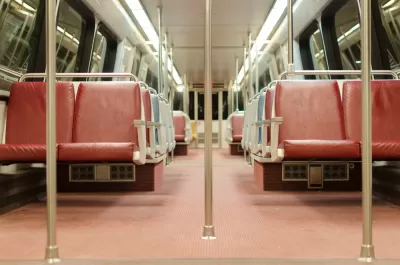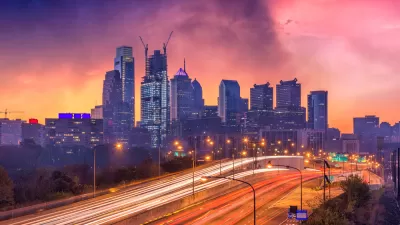A more sedentary approach to commuting is now more common than taking the bus or train to work, trailing only driving to work as the most common commute mode.

"The latest estimates from the U.S. Census Bureau published last week show that approximately 8 million workers primarily work from home," reports Mike Maciag. "That makes telework now second behind only driving as the most common means of getting to work, exceeding public transportation for the first time."
The share of commuters choosing telecommuting in the most recent American Community Survey has grown steadily, reaching 5.2 percent. Transit commuters remains flat at 5 percent.
According to Maciag, several factors are contributing to the growth of telecommuting, including employers programs and improvements in technology.
One key demographic distinction is worth mentioning to complicate the picture: "older workers are significantly more likely to telework than younger age groups."
Maciag lists more details about the data and also a few reasons why public transit's commute share has been suppressed in recent years.
FULL STORY: More Americans Now Telecommute Than Take Public Transportation to Work

Alabama: Trump Terminates Settlements for Black Communities Harmed By Raw Sewage
Trump deemed the landmark civil rights agreement “illegal DEI and environmental justice policy.”

Study: Maui’s Plan to Convert Vacation Rentals to Long-Term Housing Could Cause Nearly $1 Billion Economic Loss
The plan would reduce visitor accommodation by 25% resulting in 1,900 jobs lost.

Planetizen Federal Action Tracker
A weekly monitor of how Trump’s orders and actions are impacting planners and planning in America.

Parklet Symposium Highlights the Success of Shared Spaces
Parklets got a boost during the Covid-19 pandemic, when the concept was translated to outdoor dining programs that offered restaurants a lifeline during the shutdown.

Federal Homelessness Agency Places Entire Staff on Leave
The U.S. Interagency Council on Homelessness is the only federal agency dedicated to preventing and ending homelessness.

Restoring Northern India’s Himalayan ‘Water Temples’
Thousands of centuries-old buildings protect the region’s natural springs and serve as community wells and gathering places.
Urban Design for Planners 1: Software Tools
This six-course series explores essential urban design concepts using open source software and equips planners with the tools they need to participate fully in the urban design process.
Planning for Universal Design
Learn the tools for implementing Universal Design in planning regulations.
Caltrans
Smith Gee Studio
Institute for Housing and Urban Development Studies (IHS)
City of Grandview
Harvard GSD Executive Education
Toledo-Lucas County Plan Commissions
Salt Lake City
NYU Wagner Graduate School of Public Service





























